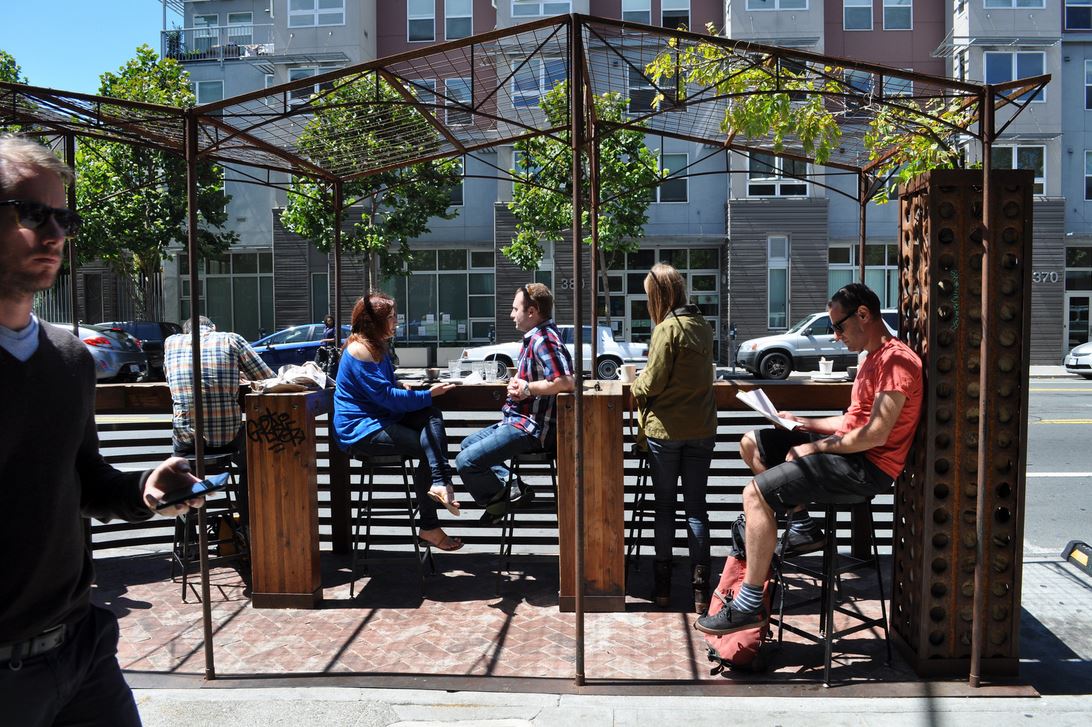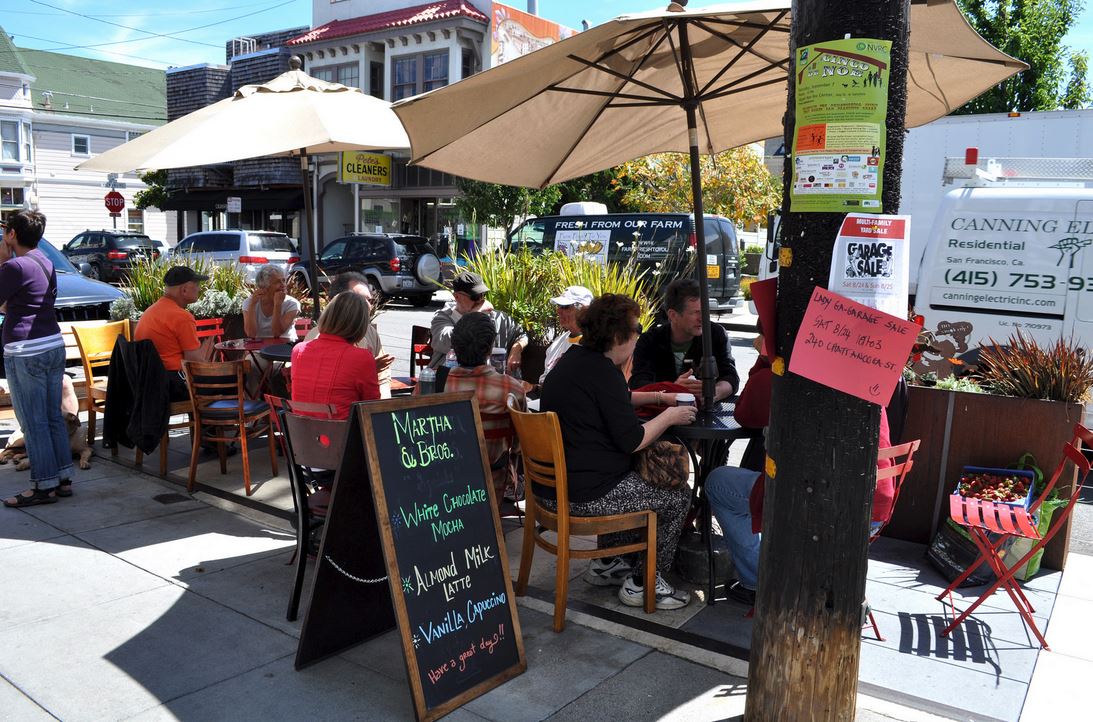The New York Times describes the origins and progress of the conversion of parking space to park:
When the Parking Space Becomes a Park
.
The idea for parklets began to germinate in 2005, when members of a San Francisco arts collective called Rebar wanted to apply their artistic flair to small fragments of real estate. They were also interested in challenging “the boundaries of the short-term lease offered by a metered parking space,” says John Bela, one of Rebar’s co-founders. And they questioned what they saw as an automobile-centered approach to urban planning and design.
They started an experiment. In a stretch of downtown San Francisco that lacked greenery, they found an empty parking space, rolled out a patch of grass turf and set up a park bench and a potted tree. They put up a sign that read, “If you’d like to enjoy this little park, please put some coins in the meter.” Then they went across the street to watch.
The land next to a parking spot, Mr. Bela says, probably rented for a couple of hundred dollars a square foot per year, “but you could rent this little piece of land, 200 square feet, in downtown San Francisco for a couple dollars an hour.”
Mr. Bela and the others saw a pedestrian wander into the spot, put money in the meter and sit on a bench. Soon another sauntered in, and the two struck up a conversation. Just like that, the exercise was a success. Without much effort or expense, the parking spot had been transformed into a mini-park. …
About 51 such parklets, each occupying one to three street parking spaces, have sprung up across San Francisco since 2010, and at least a dozen more are being designed or built, or are in the process of receiving city permits, says Robin Abad Ocubillo, the parklet program manager for the city’s Pavement to Parks program.
In the last couple of years, at least 72 more parklets have materialized worldwide in places like Philadelphia, New Orleans, Seattle, Chicago, Mexico City and Auckland, New Zealand. …
.
Closer to home, Kathleen Corey (who with Brian Gould does those great videos like Seacycles) probably knows more San Francisco’s parklets than practically anyone:
For my MLA thesis, I visited 35 and captured them through photography and data analysis. The map includes a few more parklets built since my 2013 visit.
Some samples:
375 Valencia
.
3868 24th Street

















You don’t need to look so far afield – you observed similar incursions back in 2007 in Penticton and they probably existed years before that…
https://pricetags.wordpress.com/2007/10/01/more-bc-towns-penticton/
Yet another urban trend that works great in dry climes, not so great in ours. For example, there’s one just outside a chi-chi little coffee shop on Main and 20something. It is a defacto patio for that establishment at the expense of parking for everyone else’s business. However even worse is that sits empty for most of our rainy fallwinterspring. So all businesses lost valuable spots in an area that provides no offstreet public parking in favour of a part time amenity for one or two shops. And the city lost meter revenue.
I live in Mount Pleasant and I strongly, strongly prefer the few parklets along Main to parking. Nice outdoor seating for a lot of people beats parking spots for just a few cars, in our view.
Well of course you would. If you live there it is easy to ignore the fact that all those trendy restaurants and shops depend on people from outside the area shopping in them. Main does not survive on local hipsters alone. To hand one business a free patio at the expense of delivering customers to all businesses is silly. Two parking space would turn over several times a day to deliver patrons to all businesses.
1) If businesses want more parking, they can pay for it – there are other and better uses for public land.
2) This seems like a case of status quo bias – we wouldn’t even be having this conversation if the land had always been a park, or a patio, or extra sidewalk space.
Bob, you’ve lost what, at best three dead storage spaces for cars? Don’t worry, the cars only shifted to bump parking spaces for the residents and tragically forced the occupants to actually walk a block or two to their destination. But the gain is a place animated by humans on average nine months of the year. Even on a sunny Saturday in January you’ve got people using it as spillover from the perpetually crowded JJ Bean and Starbucks. By the way, there’s another one up on 21st x Main, but it took away only one stall.
Personally, I’d like to see a lot more parklets, but let’s make them permanent with quality stone paving, seating, cool lighting, a drinking fountain and art. The largest ones could have a glass canopy. There is more than enough transit and pedestrian traffic to justify taking out a few parking stalls. That is valuable land that could be put to a better use.